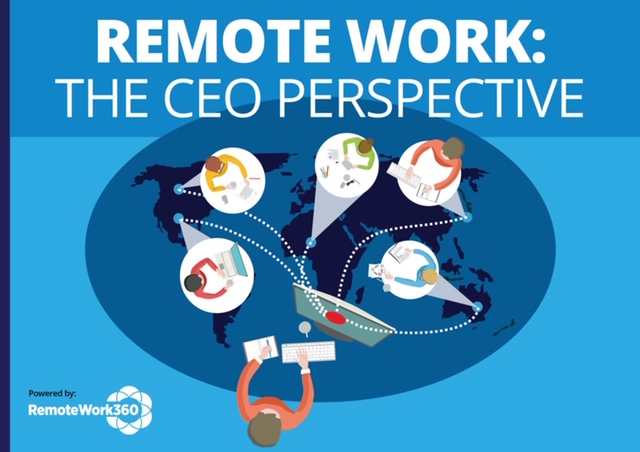Beware the unintended consequences of remote work
- Home
- Supplier Directory
- Attendance & Monitoring
- Collaboration & Communication
- Cloud Telephony & VOIP
- Collaboration & Secure File Sharing
- Communication Software
- Creative Tools
- Culture Building
- Interactive presentations/screen sharing
- Messaging Tools
- Online Training
- Productivity
- Project Management
- Shared workspaces
- Time Tracking
- Video Conferencing
- Virtual Water Cooler
- Web Developer tools
- Finance/Accounting
- HR/Talent Management
- IT
- Managing Remote Teams
- Productivity
- Project Management
- Remote Workplace Wellness
- Sales & Marketing
- eNewsletter
- Events / Education
- About Us
- News
HR/Talent Management
ByHeidi Williams
Be careful of making your flexible remote work policy too bendy
Many businesses will have transitioned to fully remote as a result of Covid19 and intend to stay fully remote, even when things get back to “normal”. But a bigger majority of businesses have embraced – or tolerated – remote work as a matter of necessity and intend to always maintain an office base, although it may look and operate very differently in the future. Dropbox made the news recently, with their announcement that they would be a “virtual first” company, which means their employers will work remotely on the whole, but that they will maintain office space and bring teams together for specific and ongoing tasks and requirements.
What does remote-friendly really mean?
Indeed, a whole new ecosystem of words has been invented to differentiate between the types of remote work. Remote friendly is the most frequently used term to describe companies that have an element of remote working, and are flexible to it, but have an office base too.
There’s still a huge variance between companies in terms of what that means – for some, it’s a case-by-case flexible discussion based on the needs of the hiring manager and team and the quality/accessibility of the candidate. For others, there are clear patterns created by necessity to make maximum use of available office space, which see colleagues coming into the office on rotation, or perhaps for specified and pre-defined meetings and brainstorming sessions. It’s a spectrum – and like many spectrums, it’s less of a linear axis and more of circular one, in which employers may be very flexible on certain elements of remote working and inflexible on others.
Wherever your company sits on this spectrum, there is a real need for detailed strategic planning around everything from exactly how bendy your flexible working is going to be and whether it will vary between teams and even within teams, how you will actively manage and lead and imbue your company culture in this new work reality, what tools and technologies and platforms will you use to facilitate this dual way of working, when you mix up in-office and remote employees, how will you make sure your remoters don’t get FOMO, don’t feel like they’re missing out – or actually are missing out, if conversations have been had but not heard by all. We delved into some of the questions CEOs need to ask and decisions that need to be made around your remote work policy in this article.
Avoid creating two tiers of employee; remote versus in-office
A key concern however, regardless of whether companies are planning to call their new working model hybrid, remote-friendly, virtual-first, distributed, partially-remote or remote flexible, will be how to avoid creating two tiers of employees – those who are permanently and predominantly in the office, and those who are predominantly not. How do you manage a company culture, and ensure your top talent is being nurtured and not overlooked when a significant portion of them are largely “out of sight, out of mind”. Even if you’re doing regular video conferencing, and constantly meeting virtually with your teams, there is, without doubt, still a difference in the quality of interactions between people physically present and those only virtually present. If all staff are remote, and just come together at specified times it’s not an issue, but if your business is flexible to remote working so that you have a mix of different patterns and presenteeisms, there will be a rupture in the culture, a rift in the career opportunities and a whole heap of potential for resentment, feelings of inequality, feeling the need to work harder to “prove” yourself in lieu of presenting yourself and all manner of other dysfunctional outputs.
In proving yourself to be a modern employer, bang on trend and keeping with the times – be cautious about creating fundamental cracks in your organization, by allowing your remote work policy to evolve too naturally, into flexible patterns which suit everyone individually but suit no-one collectively. Some businesses, with predominantly remote teams, insist their in-office workers still jump into separate meeting cubicles, to join meetings virtually even though they could get together physically, to avoid creating this inequality.
We’ll be talking to leaders of remote-friendly organizations – to keep uptodate with their insights and strategies, sign up for our newsletter here.
Related Posts
An estimated 86.3% of San Francisco employees are working from home, the highest rate among 10 major ...
May 11, 2021
In the third instalment of her blog - you can catch the first, on maintaining creativity here and ...
January 22, 2021
The different “kinds” of remote: finding the right fit your business Covid-19 has turned our world ...
January 14, 2021
RemoteWork360
RemoteWork360.com is powered by Chief Executive Group, which exists to improve the performance of business leaders, build communities and strengthen society.
Latest Insights
COPYRIGHT ©2020 REMOTEWORK360. ALL RIGHTS RESERVED.



